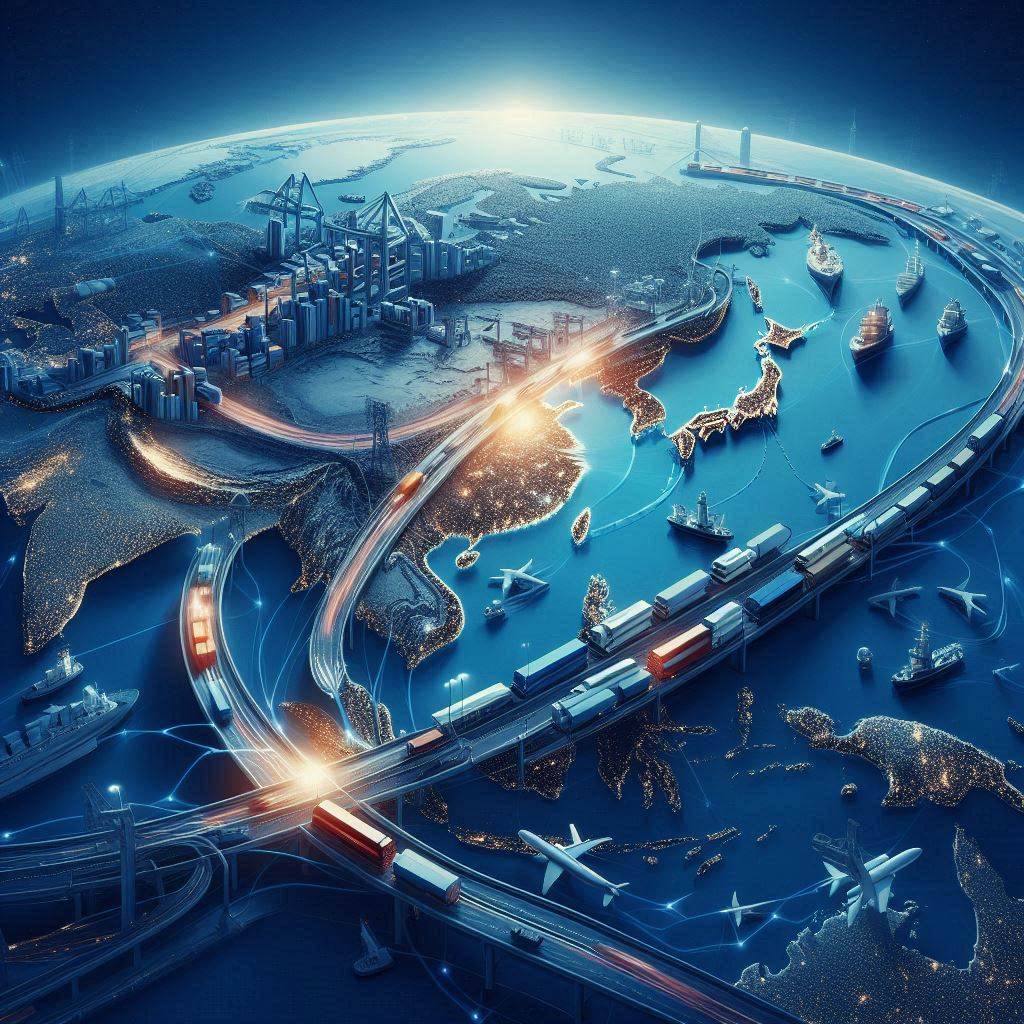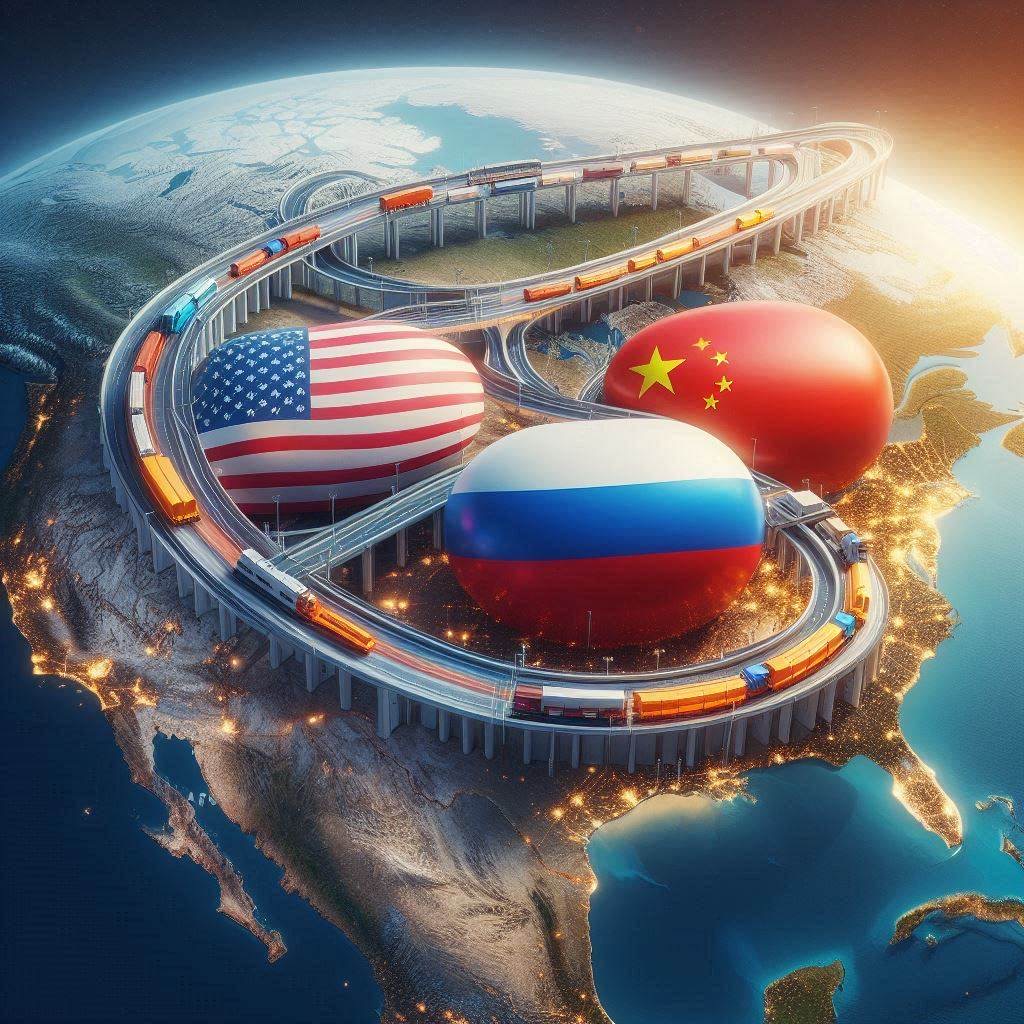The concept of "corridors" has become important in international relations, representing routes that link countries through infrastructure projects. Powers such as China, the United States, and Russia use these corridors to extend their influence and reshape global trade patterns, as highlighted in an article authored by Sophia Nina Burna-Asefi published in the Diplomat.

The term "corridor" has become popular in governance and analysis. To grasp its meaning, a clear definition is needed. Although China, the United States, and Russia each use different corridor strategies, they share three core elements. According to Simon Curtis and Ian Klaus on transnational corridors and John Agnew and Alison Williams on transcontinental theories, the corridor concept involves projecting state power over time and space, spreading civilization, and extending state influence through the development of transnational infrastructure like railways, roads, and ports.
Central to the corridor approach is the idea that building transnational corridors is directly linked to reshaping the international order. The China-led Belt and Road Initiative (BRI) is the first modern example of this concept.
China's Belt and Road: Shaping Trade and Tech
Since its launch in 2013 by Chinese President Xi Jinping in Kazakhstan, the Belt and Road Initiative (BRI) has primarily focused on Asia. The initiative features six corridors, with the largest and most developed being the China-Pakistan Economic Corridor (CPEC). A major goal of the BRI is for China to shift from being a “traditional workshop of the world” to a high-tech economy, leading in fields like biotech, pharmaceuticals, AI, robotics, automated vehicles, and aerospace. This transformation positions countries like Pakistan, Uzbekistan, Kazakhstan, and others across Asia as key manufacturing hubs and transit points.
The BRI aims to redirect global trade towards China, boosting its international influence and shifting economic gravity eastward, involving Asia, Africa, and Europe. If successful, the BRI would impact the U.S. and its allies, as Xi Jinping envisions a new leading role for China in global affairs, blending soft and hard power.
“The consequences for the U.S. and its partners would be significant. This is what Xi has called the ‘Chinese Dream’ – a new leading role for China in international society, encompassing both soft and hard power.” The BRI also aims to advance Chinese civilization across the developing world and connect these countries with Chinese technology through “digital corridors,” Diplomat article noted.
Despite its progress over the past decade, the BRI has faced resistance in some Asian countries due to local politics, labor issues, and business interests. Additionally, China and Russia seem to have overlapping interests in establishing corridors in the same regions. As CPEC moves into its second phase, plans have been announced to extend it to Uzbekistan.

Russia's Transnational Corridors
For Russia, establishing transnational corridors in Asia has become a key focus in its foreign policy, especially following the full-scale invasion of Ukraine in February 2022 and subsequent international sanctions. These corridors are part of Russia’s strategy to bypass Europe and access new markets.
Key Russian projects include:
- International North-South Transport Corridor (INSTC): A 7,200 km route launched in 2000 by Iran, Russia, and India, with participation from Oman, Turkey, Azerbaijan, Turkmenistan, Kazakhstan, Afghanistan, and Pakistan.
- Northern Sea Route: A series of sea routes along Russia’s northern coast linking to the Pacific Ocean.
- Northern Corridor: Connecting Europe with China via Russia and Kazakhstan or Mongolia.
Russia views these corridors as a way to build a “Greater Eurasian Partnership,” aiming to integrate the BRI with the Eurasian Economic Union (EAEU) and compete with China.
“The goal of this partnership is two-fold: to cooperate and connect the BRI with the Eurasian Economic Union (EAEU), a Russia-led economic customs union, and to compete with China by connecting EAEU observers and members with Iran, India, and Southeast Asia,” according to an article published by Diplomat.
Recent developments include agreements from the Russia-India summit in July, where new transport routes for the INSTC were discussed, along with the Chennai-Vladivostok sea line and unified customs procedures with digital systems. Additionally, Russia has invited Pakistan to join the INSTC and expressed willingness to finance the Trans-Afghan Railway Project and conduct feasibility studies.
Western Connectivity Initiatives: Countering and Competing with China
The United States and its partners have shifted their foreign policy to focus on connectivity projects. Major initiatives include the India-Middle East-Europe economic corridor, involving the U.S., EU, and India, and President Joe Biden’s "Partnership for Global Infrastructure and Investment (PGII)," launched in 2021 as a counter to China’s BRI. These efforts highlight the role of transnational corridors in geopolitical strategy. The U.S. also supports corridors bypassing Russia, such as the Middle Corridor, which connects China to the Black Sea via Central Asia and the Caspian Sea.
There are two key differences between the U.S. and China’s approaches. The PGII is a privately-led initiative aimed at infrastructure upgrades in developing nations, with lower funding compared to China’s state-driven BRI. Another significant Western project is the EU Global Gateway Initiative, launched in 2023, aiming to mobilize up to 300 billion euros for key sectors like transport from 2021 to 2027. The Middle Corridor and the EU-funded Regional Transport Program, set for adoption in 2025, are major targets for this fund.
“For the U.S. and its partners, the key aim of their corridor approach is to ensure Western interests and influence are not compromised overseas, managing and checking the growing Chinese influence in the world economy,” the Diplomat publication noted.
New geopolitical and geoeconomic realities are emerging in Asia as infrastructure investments drive the “corridorizing” of the region, reshaping the international order. While China’s BRI has made significant strides over the past decade, there remains an opportunity for the U.S. and the West to make an impact.
To address these dynamics, the West should focus on leveraging its model to authentically extend its economic influence in Asia. Policymakers need to explore how to structure new supply chains that allow companies in the Global South to access Western markets. Increasing investment in infrastructure projects in Asia will also help balance the costs and benefits of transport.
These competing transnational corridors are redefining strategic thinking and geopolitical competition for the coming decade.
Original publication written by: Sophia Nina Burna-Asefi
Follow Daryo's official Instagram and Twitter pages to keep current on world news.
Comments (0)